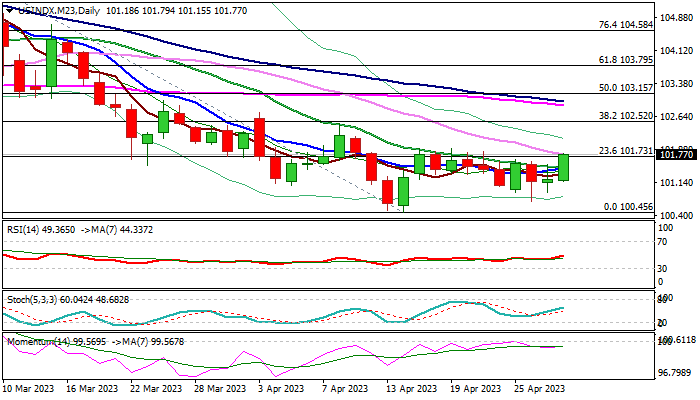Dollar advances on dovish BOJ, weaker Euro; markets await release of key US PCE report
The US dollar index rose to one-week high in European session on Friday, lifted by dovish BOJ, after the currency escaped from stronger negative consequences from much weaker than expected US Q1 GDP, as consumer spending accelerated on rising inflation, partially offsetting negative impact.
Expectations that the Fed would opt for another 25 basis points hike before putting its tightening cycle on hold for the rest of the year contributed to keeping the greenback afloat.
Technical picture on daily chart shows signs of improvement but remains bearish overall, with negative signals from weakening monthly studies and the index being on track for the second consecutive monthly loss.
Fresh advance needs a sustained break of the lower platform at 101.90 zone (Apr 17/21 tops) to sideline persisting downside risk and generate initial bullish signal for continuation of recovery leg from 100.45 (new 2023 low posted on Apr 14).
The dollar was also underpinned by weaker Euro, as data released today showed that inflation in in the euro bloc remains elevated, German economy stagnated in the first three months of the year, while Eurozone economy grew at a slower pace than expected.
Traders await release of US Core PCE price index, Fed’s preferred inflation gauge, which is expected to show unchanged rise of 0.3% m/m in March and annualized figure is expected to tick to 4.5% from 4.6%.
Initial signs that inflation is easing would put the greenback under pressure, while stronger drop could be expected on downside surprise in March.
Conversely, the greenback would rise on signals that inflation is gaining pace again.
Res: 101.53; 101.88; 102.22; 102.46
Sup: 101.07; 100.66; 100.00; 99.30



